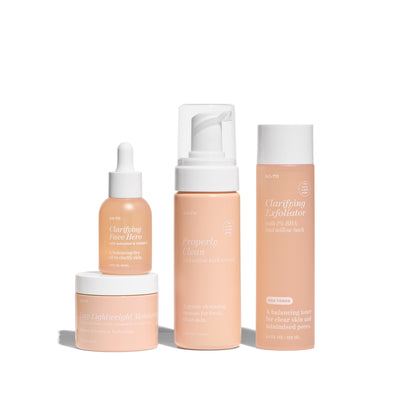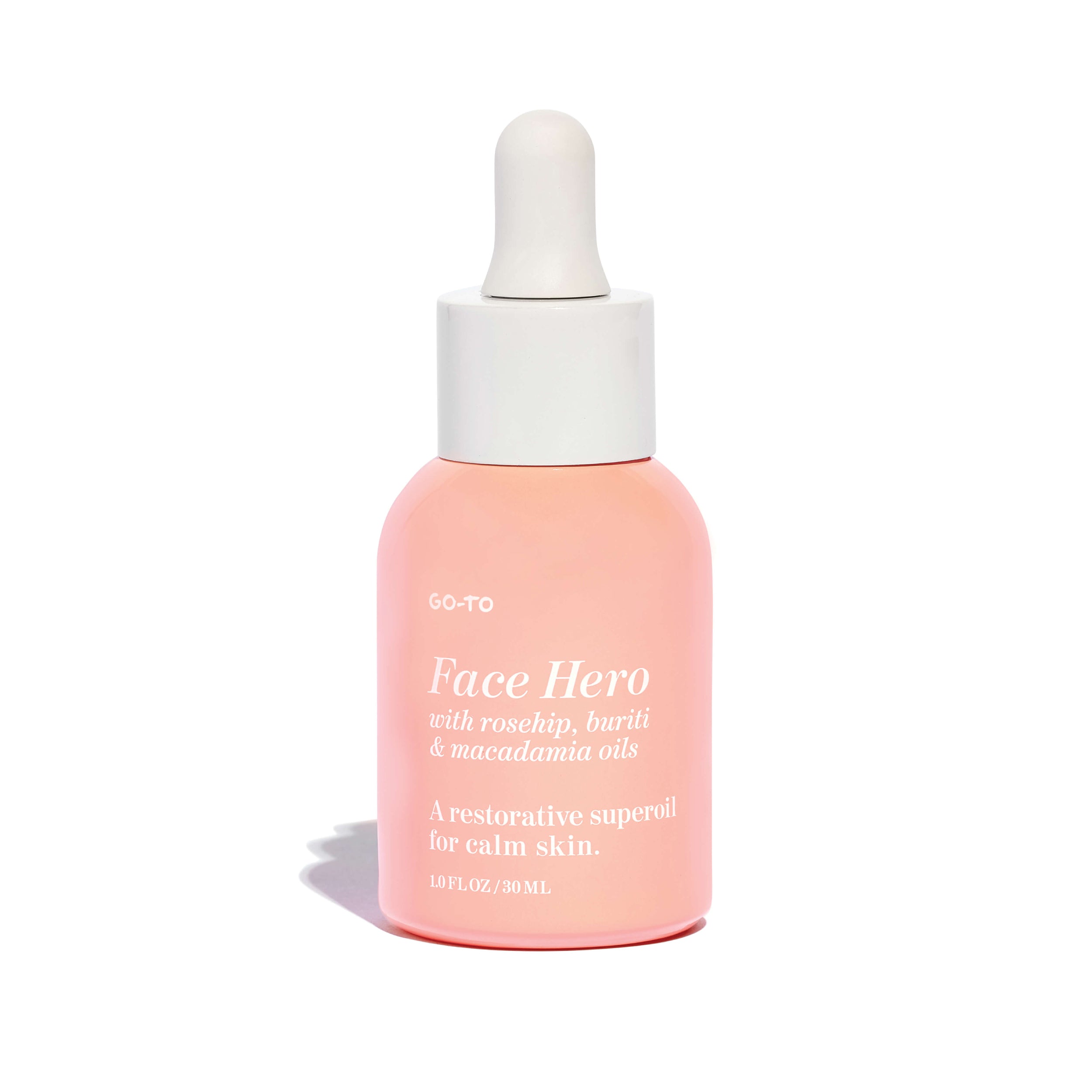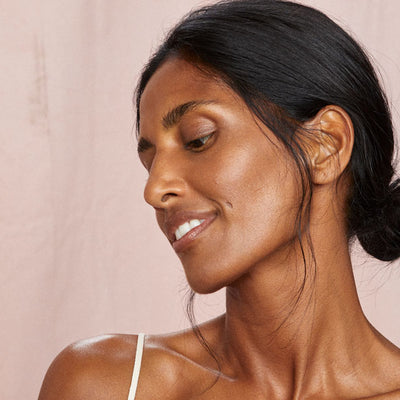Breakouts come in all shapes and sizes! But you already know that because it's incredibly likely that you’ve dealt with a vast array. (Don't worry, we have too.) To make things more complicated than seems necessary, each pimple type—blackheads, cysts, pustules, etc.— requires a different set of treatments and ingredients to help clear your skin.
Before we break down the ins and outs of dealing with pimples and all their baggage, we want to remind you of two key ingredients that are always necessary for sorting out these pests: Patience and consistency. The battle against breakouts won’t be won overnight. It takes restraint and a calm outlook. It will also take regular exfoliation, cleansing properly and consistently, as well as resisting the (incredible) urge to pick.
One of the most important steps in learning how to manage breakouts is learning what kind of pimple you’re dealing with. In some cases, especially with non-inflammatory pimple types (blackheads, whiteheads) you can lean into DIY treatments that are effective and safe.
And in others, (inflammatory types such as nodules, papules, etc) you'll require the help of a doctor or skin professional to determine what the underlying cause may be and what treatment track will serve you best.
NON-INFLAMMATORY ACNE
Blackheads
What are they and how do they form?
These are a type of non-inflammatory acne so common that even your dog has them, though oily skin types can be more prone to these menaces. Open comedones are caused by clogged pores (blame dead skin, humidity and sebum), and are black as a result of oxidation, or in simple terms: oxygen hitting your open pore and all the gunk inside.
Treat blackheads with...
A BHA like salicylic acid is your best friend when it comes to blackheads as it works hard to keep pores clean and exfoliate skin. An ingredient like salicylic acid can be worked into your cleansing or exfoliating steps, just be sure not to over do it as your skin will be seriously pissed. You may also want to consider a cleansing tool which can help shift dead skin and prevent new blackheads from forming.
Steer clear of pore strips (we beg you! They’re not your friend!) and opt for a gentle clay mask instead, as they can help decongest your pores long-term. Extractions are also a common way to deal with these pimple types but be wary of trying this at home as scarring can occur if you don’t know what you’re doing. (Watching Dr Pimple Popper does not make you an expert.) (Sadly.)
Whiteheads
What are they and how do they form?
You can spot (sorry) whiteheads by their white (duh) or fleshy appearance. These non-inflammatory types of comedones have closed surfaces, trapping build-up (sebum, oil, etc.), and can appear on your arms and shoulders as well as your back, chest and face. They can turn up for a number of reasons (Hormones! Sweat! Product buildup!) so they require careful handling and can sometimes be treated with simple lifestyle changes (changing out of your gym gear sooner, washing your pillow more regularly, less sugar).
Treat whiteheads with...
You can safely and easily destroy whiteheads but please for the love of Harry Styles resist the urge to pick. Instead, reach for a gentle drawing paste with clay or sulfur and follow with calming ingredients to soothe cranky skin. If you’re dealing with a blind pimple (the worst) look to Go-To’s lead astrologer and founder Zoë Foster Blake for help.
INFLAMMATORY ACNE
Papules
What are they and how do they form?
Papules are a type of inflammatory acne that appear red and small but without pus. If pus develops, papules grow up to become pustules. Papules can form thanks to bacteria, hormones, overproduction of oil, diet or even stress.
Treat papules with...
Common acne treatments like over-the-counter salicylic acid or benzoyl peroxide are often your first port of call for treating papules. If these don’t work it’s likely that topicals (retinoids, Dapsone and even antibiotics) may be prescribed further down the line.
Pustules
What are they and how do they form?
Pus-filled, red-rimmed and total brats, pustules can form for a number of reasons, especially hormonal changes or imbalances which is why they’re often experienced by teenagers. Pustules can often mean an infection has developed within the pore and if they become sore or harden they become what’s known as cystic acne.
Treat pustules with...
Prescription-strength salicylic and azelaic acid, or Dapsone, can help treat pesky pustules. Be sure to avoid oil-based products, harsh scrubs or cleansing tools (cloths, brushes, etc.) as they can irritate the skin.
Cystic Acne
What is it and how does it form?
Cystic acne is often larger in size and sits deeper within the skin. They can be pus-filled, an angry shade of red and tender to touch. Jerks!
Treat cystic acne with...
It’s best to call on a derm for help with cysts as they are considered the most severe types of acne. Over-the-counter treatments aren’t tough enough for cystic acne and a cocktail of treatments—isotretinoin, topical retinoids and oral antibiotics—are often prescribed for management.
Nodular Acne
What is it and how does it form?
Nodular acne can be flesh-tone or red and like cysts they live deep under the skin. Unlike cysts, they don’t have a head and as a result can harden beneath skin.
Treat nodular acne with... Calm And Clear Beat the breakouts with four clever, full-sized products to balance oil, reduce shine, minimise the appearance of large pores, and banish blemishes.
Always seek a professional opinion if you believe you’re dealing with nodules as a doctor or dermatologist can help you formulate a plan for managing these acne types. Prescription-strength salicylic acid or benzoyl peroxide are common remedies for these rascals, as are retinoids and oral antibiotics, which aid in wiping out trapped bacteria.Beat The Breakouts

















Comments